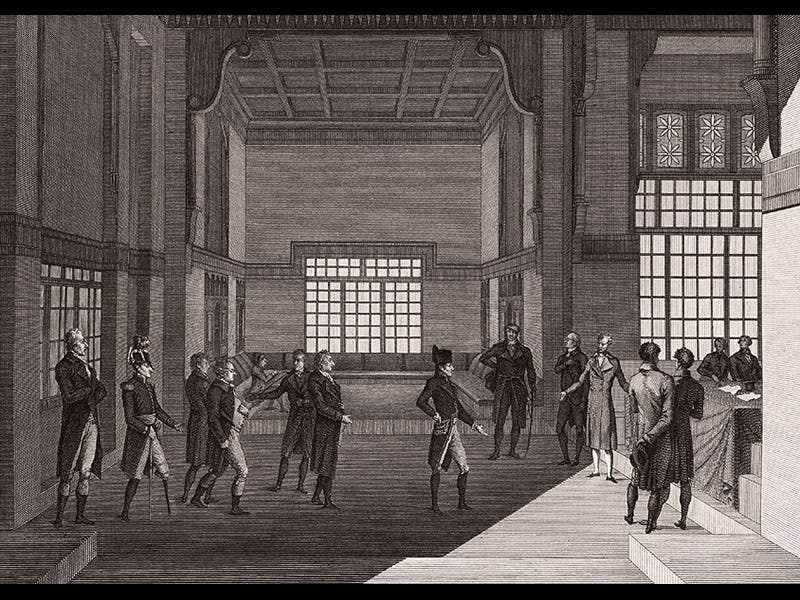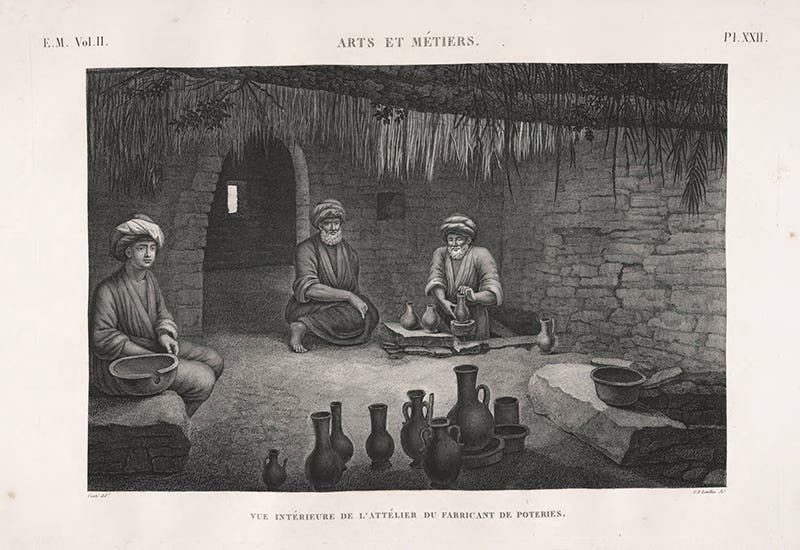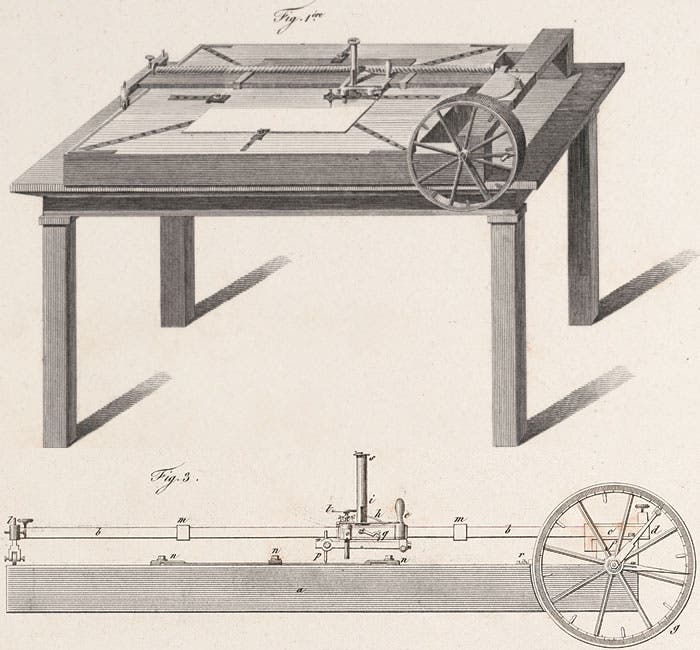Scientist of the Day - Nicolas-Jacques Conté
Nicolas-Jacques Conté, a French inventor and engineer, was born Aug. 4, 1755. Conté was a member of the scientific corps of Napoleon's expedition to Egypt, 1798-1801. He was a skilled machinist, and his first task was to replace all the measuring equipment that was lost when the flagship of the invasion fleet sank on arrival. After that, he gathered information on the crafts of Egypt, visiting the shops of the potters (second image), glass-blowers (third image), and blacksmiths, and making finished drawings of their tools and methods, all of which would be published in the great Description de l'Egypte (1809-1828).
But perhaps his greatest contribution was the invention of an engraving machine (fourth image). When it came time to publish the results of the expedition, the editors were faced with the task of engraving hundreds of extremely large plates, with much of the space filled with the Egyptian sky, which had to be shaded in. Previously the shading would have been engraved by hand and would have taken thousands of man-hours. Conté's machine could do all this laborious shading mechanically, and in a fraction of the time. It is safe to say that, without it, those grand plates of the Pyramids and the temple at Karnak would have been a lot longer emerging from the press. We featured Conté, his machine, and some of his drawings, in our 2006 exhibition, Napoleon and the Scientific Expedition to Egypt.
Conté lost an eye in an early explosion, and in the famous group portrait of the scientists of the Institute of Egypt (first image), Conté is easy to spot, with his rakish eye patch, standing just behind Napoleon.
William B. Ashworth, Jr., Consultant for the History of Science, Linda Hall Library and Associate Professor emeritus, Department of History, University of Missouri-Kansas City. Comments or corrections are welcome; please direct to ashworthw@umkc.edu.










